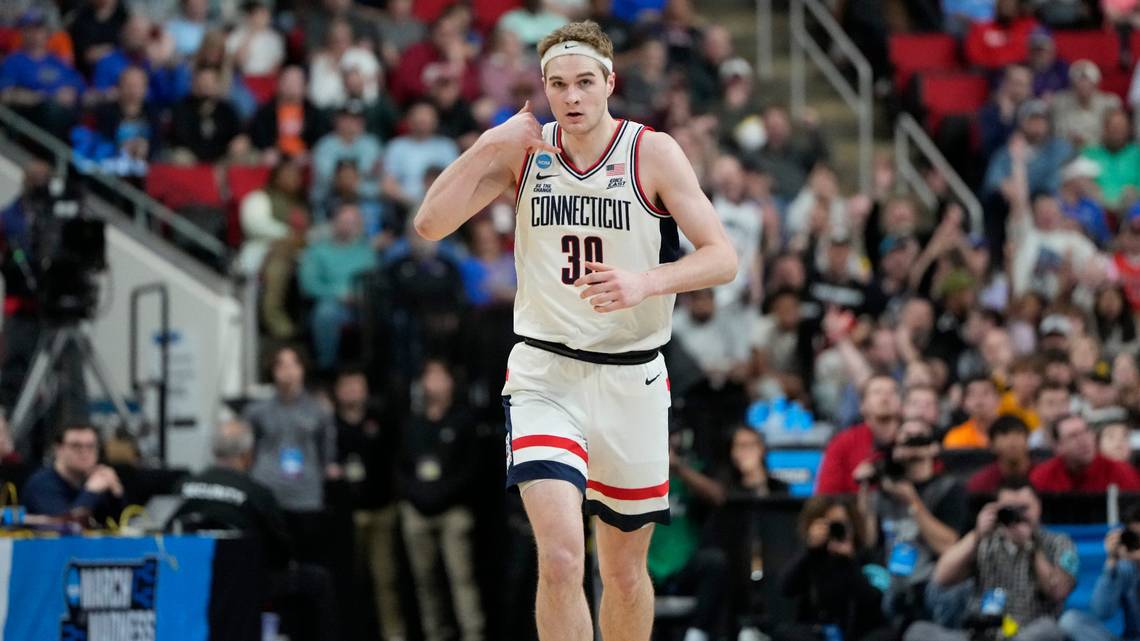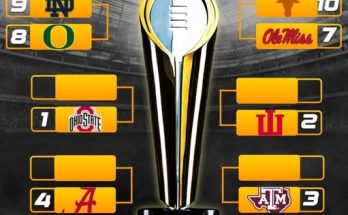As the 2025 NBA Draft approaches, the Miami Heat find themselves in a familiar position: poised to reload and retool with an eye toward contending. Holding the No. 20 overall pick, the Heat are in the market for a versatile wing who can contribute early and develop into a cornerstone player. With Jimmy Butler aging and the roster in need of fresh two-way talent on the perimeter, Miami’s front office knows this selection carries significant weight. The good news? This year’s draft is rich in wing prospects—players with the size, skill, and basketball IQ that the Heat value in their developmental pipeline. Here’s a closer look at some of the intriguing wings who could be available when the Heat are on the clock.
One of the more tantalizing options projected in the mid-to-late first round is Baylor’s Dillon Mitchell, a 6-foot-8 forward with freakish athleticism and a high defensive ceiling. After transferring from Texas and thriving in Scott Drew’s system, Mitchell showcased improved offensive instincts and a much more reliable jumper. He’s the type of athlete Miami has a track record of turning into a problem for opposing teams, especially given their player development culture. Mitchell’s energy, length, and transition game are tailor-made for Erik Spoelstra’s switch-heavy defensive schemes, and he could immediately carve out minutes as a defensive disruptor while his offensive polish continues to improve.
Another name gaining steam in Heat draft circles is Colorado’s Cody Williams. While there’s a chance he goes before No. 20, his uneven production during the college season might cause him to slip. Williams, the younger brother of Oklahoma City’s Jalen Williams, boasts a similarly intriguing skill set. At 6-foot-7 with a 7-foot wingspan, Cody offers fluid ball-handling, strong playmaking instincts, and defensive versatility. He’s still adding muscle to his frame, but the Heat have never shied away from long-term upside—especially in wings who can handle, shoot, and guard multiple positions. If he’s available, Williams could be too good for Pat Riley and company to pass up.
Should Miami prioritize shooting and spacing, Duke’s Mark Mitchell offers a compelling blend of toughness, physicality, and shooting upside. At 6-foot-8, Mitchell took significant steps forward in his sophomore season, improving as a catch-and-shoot threat and displaying more confidence attacking off the bounce. His defensive fundamentals are strong, and he has the tools to defend both wings and small-ball fours. Given Miami’s reliance on drive-and-kick action and a spacing-heavy offense built around movement, Mitchell’s ability to stretch the floor while defending his position makes him an ideal fit. He’s also battle-tested, having played big minutes for a program used to high-pressure environments.
A wildcard option is Izan Almansa, the 6-foot-10 Spanish forward who’s coming off a season with the G League Ignite. Though not a wing in the traditional sense, Almansa plays a hybrid forward role and has shown flashes of perimeter shooting and playmaking that suggest he could function as a combo forward at the NBA level. His feel for the game is elite, and he thrives in high-IQ systems that prioritize ball movement and spacing—two hallmarks of the Heat culture. If Miami sees Almansa as a multi-positional defender who can also act as a secondary creator, he may earn a long look. His international experience and toughness would make him a strong culture fit.
Should Miami look to bolster their wing rotation with a more polished scorer, Marquette’s David Joplin fits the mold. At 6-foot-7 and nearly 230 pounds, Joplin brings the physicality and toughness Miami covets. He can hit threes at a high clip and competes on the glass with relentless energy. While he’s not the most dynamic shot-creator, his ability to knock down open shots, defend bigger wings, and execute his role cleanly would allow him to contribute from day one. His motor and intangibles fit right into the Heat’s blueprint, and his offensive floor is arguably higher than several other options in this range.
One of the more intriguing European prospects in this class is French forward Pacôme Dadiet. Standing at 6-foot-8 with a silky shooting stroke and fluid athleticism, Dadiet’s game has been drawing comparisons to modern NBA wings like Franz Wagner. He may need time to adjust to the physicality and pace of the NBA, but his natural scoring instincts and high-level footwork are already present. The Heat have historically taken international players who need seasoning and turned them into reliable contributors. If Dadiet is on the board, he would offer a high-upside swing with the kind of perimeter versatility every team is chasing.
A more defense-oriented option could be Kansas State’s Arthur Kaluma. He transferred in from Creighton and impressed scouts with his improved perimeter game and relentless competitiveness. Kaluma doesn’t yet have a reliable jumper, but he’s a tenacious on-ball defender with a solid frame, standing 6-foot-7 and weighing around 225 pounds. His ability to check top scoring options and fight through screens is valuable, especially in playoff scenarios. If Miami views him as a Justise Winslow 2.0 with better long-term health and improved shooting mechanics, they may be inclined to make the investment. He wouldn’t be expected to carry a heavy scoring load early on, but his floor as a defensive stopper is solid.
Another player to watch is Kansas’ KJ Adams, a powerful and explosive wing-forward hybrid who’s undersized at 6-foot-6 but plays with tremendous physicality and heart. Adams’ offensive game is limited outside of the paint, but his motor and defensive intensity are elite. In Miami’s system, where toughness and conditioning are non-negotiables, Adams could flourish as a high-energy role player. Think of him as a Swiss Army knife who can guard up or down, finish through contact, and contribute to winning basketball. His leadership and maturity also stand out—something that holds weight in Pat Riley’s war room.
If the Heat prefer a longer-term project with serious upside, Wake Forest’s Bobi Klintman might be a sleeper pick. The 6-foot-10 Swedish forward has shown flashes of perimeter shooting, ball-handling, and rim protection. His body is still filling out, but his agility at that size is rare. He’s raw but intriguing, and Miami has never hesitated to draft high-upside forwards and mold them slowly. Klintman would likely spend time with the Sioux Falls Skyforce, but if his development accelerates, he could emerge as a unique two-way weapon.
Versatility remains the name of the game in the modern NBA, and few players embody that more than Miami native Terrance Arceneaux out of Houston. At 6-foot-7, Arceneaux is a relentless defender with strong instincts and the ability to hit corner threes. While his offensive game needs further refinement, his defensive upside and willingness to do the dirty work make him a very Heat-esque prospect. With Caleb Martin entering free agency and Haywood Highsmith’s future uncertain, Arceneaux could slide into a rotation spot as a rookie, particularly if he shows shooting growth in camp.
For a more established scoring presence, Oregon’s Kwame Evans Jr. could be in play. He’s a 6-foot-9 wing-forward with an expanding offensive bag and strong finishing ability. Evans plays with poise, and while he’s still developing a consistent three-point shot, his ball-handling and face-up game are advanced for his size. He projects as a switchable forward who can score at all three levels with continued development. Given Miami’s recent success with big wings who can create mismatches, Evans could be a high-upside gamble worth making.
Miami’s draft history under Pat Riley and Erik Spoelstra has shown a consistent trend: they look for winners, competitors, and players who bring both toughness and coachability. Whether it’s Tyler Herro, Bam Adebayo, or Jaime Jaquez Jr., the Heat have hit on picks not always because of flash but because of fit and work ethic. Whoever they select at No. 20 will be expected to buy in defensively, execute offensively, and grow within one of the league’s most demanding and rewarding cultures.
Ultimately, the Heat have options—plenty of them. Whether they value NBA readiness, positional flexibility, or long-term potential, this draft class provides a deep pool of wing talent. With the Eastern Conference growing increasingly competitive and Miami looking to maximize the final years of its championship window with Butler and Adebayo, this pick must thread the needle between instant impact and future value. Get it right, and the Heat might once again find themselves deep in the playoffs with a homegrown star helping carry the torch. Get it wrong, and the margin for error in the brutal East only grows slimmer. The Heat have made their mark by developing talent and finding diamonds in the draft’s rougher patches. No. 20 could be the next chapter in that legacy.



